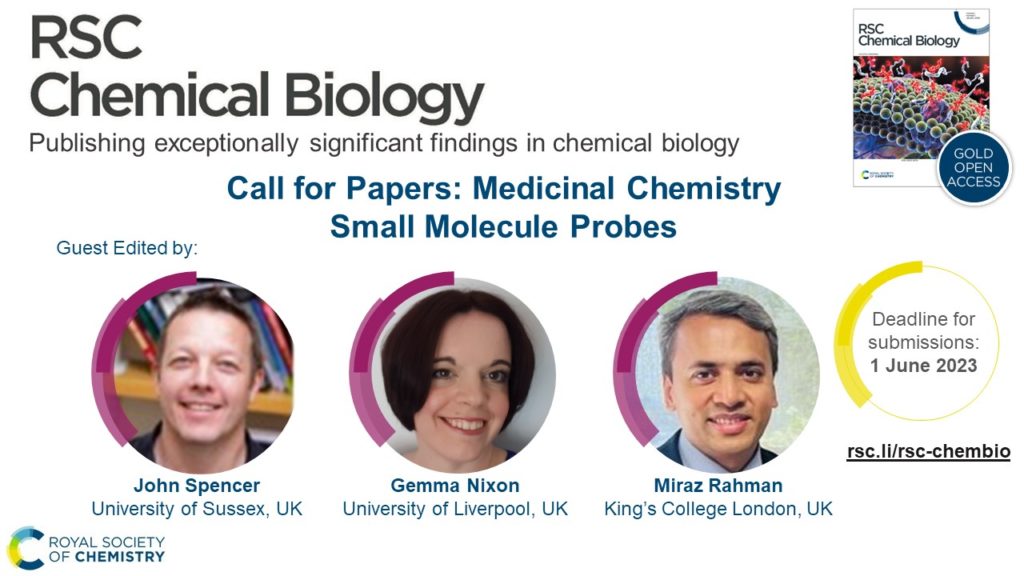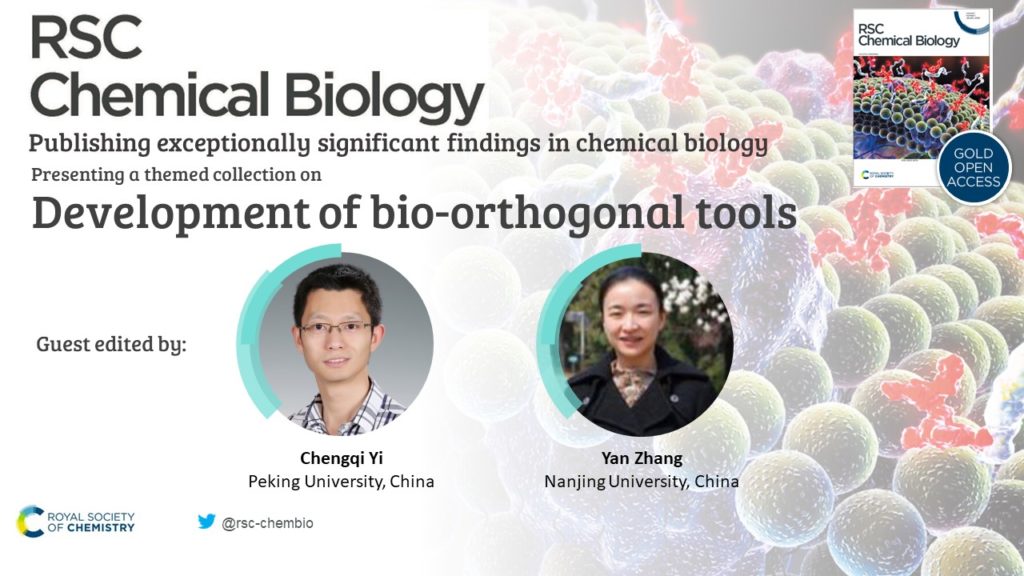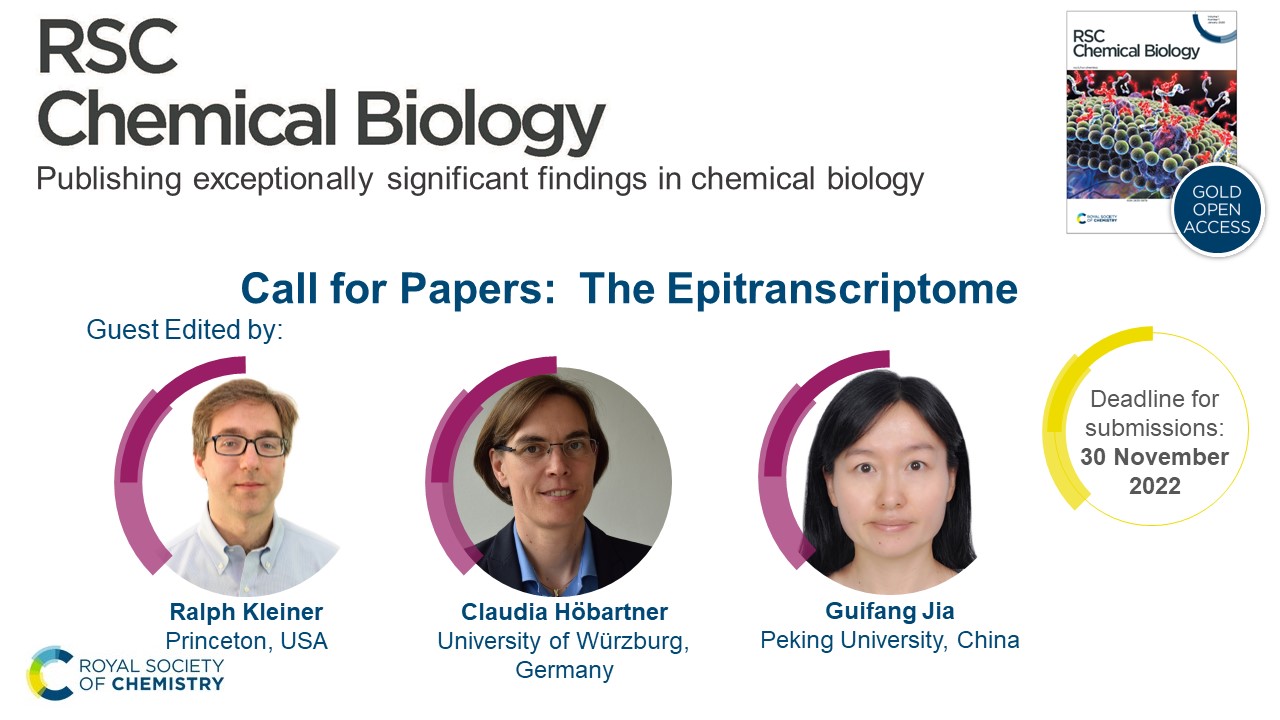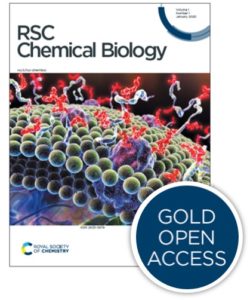We’re pleased to announce that our first guest-edited themed collection, on the Synthesis and Chemical Biology of Macrocycles, has now been published online! We thank the Guest Editors, Gong Chen (Nankai University), Monika Raj (Emory University), and Andrei Yudin (University of Toronto) for their work editing this collection.
Read the collection
Macrocycles are an important class of compounds with a long-recognised, significant role in chemical biology and drug discovery. This themed collection offers a collection of articles that showcase the ongoing interest in the chemical biology of macrocycles. Recent years have witnessed the development of new synthetic and biological strategies to construct large rings composed of amino acid residues. In addition, significant progress has been made in efforts to understand and predict the properties of macrocycles. We have collected contributions that are representative of the tremendous promise and pace of growth in this area.
The work in this collection covers all areas of the synthesis and chemical biology of macrocycles, including new synthetic and biosynthetic pathways for synthesis of diverse range of macrocycles; peptide and peptidomimetics macrocycles; design and synthesis of macrocycles for biological and medicinal applications; cell permeable macrocycles for targeting intracellular proteins; structural studies of macrocycles to expand the conformational drug space, and much more. Taken together, the papers collected in this themed collection represent the state of the art in macrocycles and highlight work at the interface of chemistry and biology.
Editorial
Introduction to ‘Synthesis and chemical biology of macrocycles’
RSC Chem. Biol., 2022, 3, 993-993. DOI: 10.1039/D2CB90018A
Reviews
Peptide/protein-based macrocycles: from biological synthesis to biomedical applications
Wen-Hao Wu, Jianwen Guo, Longshuai Zhang, Wen-Bin Zhang and Weiping Gao
RSC Chem. Biol., 2022, 3, 815-829. DOI: 10.1039/D1CB00246E
Cyclic peptide drugs approved in the last two decades (2001–2021)
Huiya Zhanga and Shiyu Chen
RSC Chem. Biol., 2022, 3, 18-31. DOI: 10.1039/D1CB00154J
Communication
Targeted disruption of PKC from AKAP signaling complexes
Ameya J. Limaye, George N. Bendzunasa and Eileen J. Kennedy
RSC Chem. Biol., 2021, 2, 1227-1231. DOI: 10.1039/D1CB00106J
Papers
Landscaping macrocyclic peptides: stapling hDM2-binding peptides for helicity, protein affinity, proteolytic stability and cell uptake
Aline D. de Araujo, Junxian Lim, Kai-Chen Wu, Huy N. Hoang, Huy T. Nguyen and David P. Fairlie
RSC Chem. Biol., 2022, 3, 895-904. DOI: 10.1039/D1CB00231G
Navigating complex peptide structures using macrocycle conformational maps
Timothy J. McTiernan, Diego B. Diaz, George J. Saunders, Fiona Spranga and Andrei K. Yudin
RSC Chem. Biol., 2022, 3, 739-747. DOI: 10.1039/D2CB00016D
Structural impact of thioamide incorporation into a β-hairpin
Kristen E. Fiore, Martijn J. Patist, Sam Giannakoulias, Cheng-Hsin Huang, Hitesh Verma, Bhavesh Khatri, Richard P. Cheng, Jayanta Chatterjee and E. James Petersson
RSC Chem. Biol., 2022, 3, 582-591. DOI: 10.1039/D1CB00229E
Synthesis of medium-ring lactams and macrocyclic peptide mimetics via conjugate addition/ring expansion cascade reactions
Kleopas Y. Palate, Zhongzhen Yang, Adrian C. Whitwood and William P. Unsworth
RSC Chem. Biol., 2022, 3, 334-340. DOI: 10.1039/D1CB00245G
Inner residues of macrothiolactone in autoinducer peptides I/IV circumvent spontaneous S-to-O acyl transfer to the upstream serine residue
Masanobu Nagano, Satoshi Ishida and Hiroaki Suga
RSC Chem. Biol., 2022, 3, 295-300. DOI: 10.1039/D1CB00225B
Discovery, X-ray structure and CPP-conjugation enabled uptake of p53/MDM2 macrocyclic peptide inhibitors
Anselm F. L. Schneider, Joerg Kallen, Johannes Ottl, Patrick C. Reid, Sebastien Ripoche, Stephan Ruetz, Therese-Marie Stachyra, Samuel Hintermann, Christoph E. Dumelin, Christian P. R. Hackenberger and Andreas L. Marzinzik
RSC Chem. Biol., 2021, 2, 1661-1668. DOI: 10.1039/D1CB00056J
Entropy of stapled peptide inhibitors in free state is the major contributor to the improvement of binding affinity with the GK domain
Ilona Christy Unarta, Jianchao Xu, Yuan Shang, Carina Hey Pui Cheung, Ruichi Zhu, Xudong Chen, Siqin Cao, Peter Pak-Hang Cheung, Donald Bierer, Mingjie Zhang, Xuhui Huang and Xuechen Li
RSC Chem. Biol., 2021, 2, 1274-1284. DOI: 10.1039/D1CB00087J
Comments Off on Themed collection on “Synthesis and chemical biology of macrocycles”










